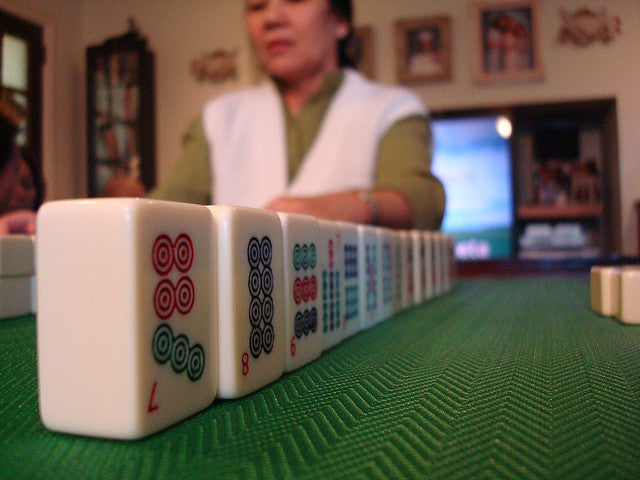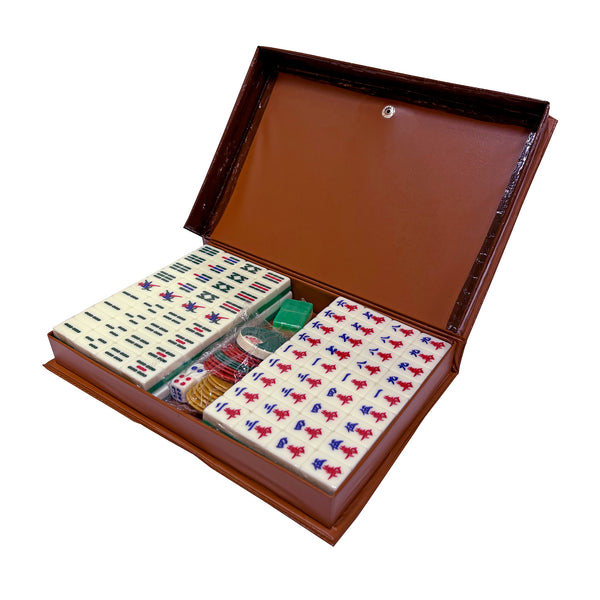
Game On! 9 Surprising Things You Might Not Know About Mahjong
The clicking of the tiles. An intermittent cry of “Peng!” or “Chi!” A sudden shout, in loss or triumph. The roaring of the tiles as they're mixed.
Mahjong.
It’s a game some of us might take for granted, whether because we had parents who played or we play it ourselves. But how much do we really know about it? Not very much it turns out! Here are nine things you might not know about the game of mahjong.
It’s relatively young — at least compared to Chinese history
While there’s some debate as to when exactly mahjong originated, according to game experts, it probably evolved near Shanghai in the 1800s, making the game about 200 years old, a drop in the bucket for a 4,000-year-old culture.
An earlier name might have been “sparrow”
Legend says that someone thought the clicking of mahjong tiles sounded like noisy birds, and so named the game maque (麻雀) or "sparrow." The modern name retains the character "ma," meaning "hemp." The second character (將) means "ready." How or when the name changed is unclear.
The game is also popular among Jewish Americans
Mahjong made its way to the U.S. in the early 1920s, returning with American businesspeople and tourists who had witnessed and played the game in China. It became immensely popular. Even Parker Brothers, manufacturer of Monopoly, Sorry!, and Trivial Pursuit, got in on the action.
After World War II, it became even more significant among American Jewish women. Facing isolation after moving with their young families from cities to the suburbs, they came together to play mahjong, building bonds and forming a community, the way many Chinese immigrants had as well.
It was once banned in China
Despite its popularity (or perhaps because of it), mahjong was once forbidden in its country of origin. After the rise of Communism, the game was criticized as a waste of time, encouraging corruption and immorality. During the Cultural Revolution from 1966 to 1976, it was banned altogether. However, risking public persecution, enthusiasts continued, albeit behind closed doors. Finally, in 1997, the government gave in and declared the game a sport and therefore okay to play, as long as participants eschewed the gambling.
The world’s longest game was played in Russia
While mahjong comes from China, the record for the longest game was set in Krasnoyarsk, Russia in 2012, clocking in at 33 hours, 3 minutes, and 48.58 seconds. The previous record-long game was held in Fuzhou City, Fujian Province, China in 2007, for a total of 29 hours and 58 minutes. We hope everyone had enough bathroom breaks!
But the biggest mahjong party was in China
While the marathon-est mahjong game was played in Russia, the biggest mahjong party took place in China. In 2013 in Dujiangyan, Sichuan, China, 2,380 people played the game at the same time, a record for the most simultaneous mahjong players.
Red underwear isn’t just for Lunar New Year
Think scarlet skivvies are just for Lunar New Year? Think again. Since the color red stands for good fortune and prosperity in Chinese culture, some players don ruby underthings for extra mahjong luck.
Books are banned
While burgundy boxers (or briefs) are encouraged, books are sometimes banished from the vicinity of the game. This is because the Chinese word for “book,” shu, is a homonym for the word for “lose.”
Can’t touch this (shoulder)
If you want to get a fellow player’s attention, definitely don’t tap them on the shoulder. Doing so disrupts their mahjong mojo — and subsequently, their good fortunes.
Want more mahjong? Learn about the meaning behind the tiles.
[Image: "Family" by greentleaf, CC BY 2.0]




